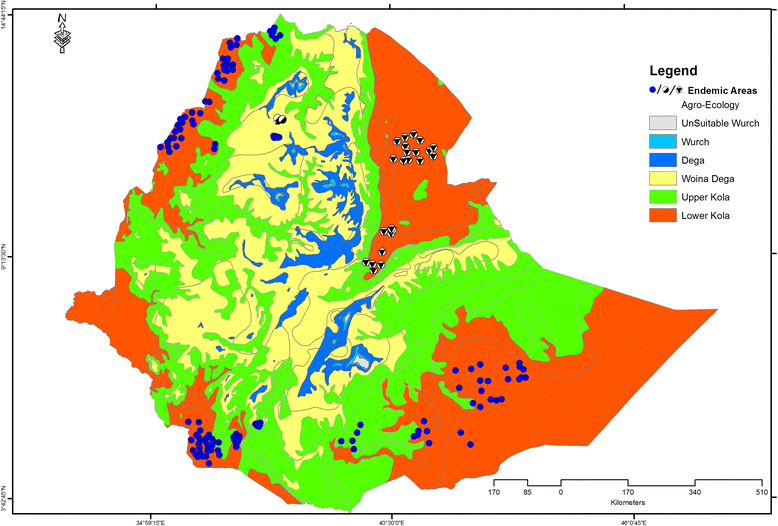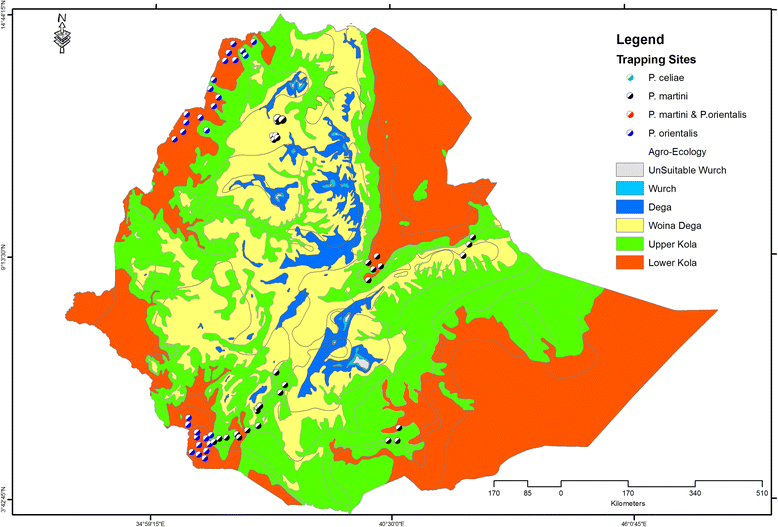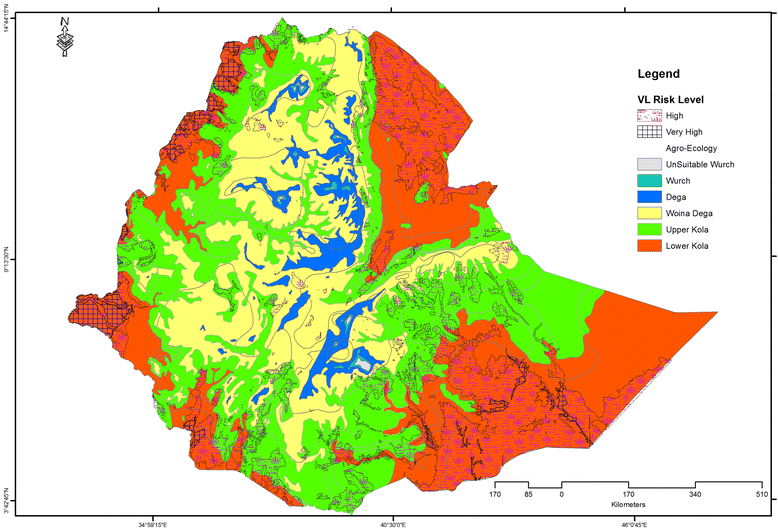Eco-epidemiology of visceral leishmaniasis in Ethiopia
- PMID: 26187584
- PMCID: PMC4506599
- DOI: 10.1186/s13071-015-0987-y
Eco-epidemiology of visceral leishmaniasis in Ethiopia
Abstract
Visceral leishmaniasis (VL, Kala-azar) is one of the growing public health challenges in Ethiopia with over 3.2 million people at risk and estimated up to 4000 new cases per year. Historically, VL was known as the diseases of the lowlanders; in the lower and upper Kola agro-ecological zones of Ethiopia. The 2005-07 out breaks in highlands of Libo Kemkem and Fogera, in the Woina Degas, that affected thousands and claimed the life of hundreds misdiagnosed as drug resistance malaria marked that VL is no more the problem of the lowlanders. The Kola (lower and upper) and the Woina Dega are the most productive agroecological zones, supporting both the ongoing and planned expansions of large or small scale agriculture and/or agriculture based industries. Thus, the (re)emergence of VL is not only a public health and social problem but also have a direct implication on the country's economy and further development. Thus is high time for its control and/or elimination. Yet, the available data seem incomplete to plan for a cost-effective and efficient VL control strategy: there is a need to update data on vector behaviour in specific ecosystems and the roles of domestic animals need to be ascertained. The effectiveness and social acceptability of available vector control tools need be evaluated. There is a need for identifying animal reservoir(s), or establish the absence of zoonosis in Ethiopia. The planning of prevention of (re)emergence and spread of VL to areas adjacent to endemic foci need be supported with information from spatio-temporal mapping. In affected communities, available data showed that their knowledge about VL is generally very low. Thus, well designed studies to identify risk factors, as well as better tools for social mobilization with the understanding of their knowledge, aptitude and practice towards VL are necessary.
Figures



References
-
- Prajapati V, Mehrotra S. Advances in the Diagnosis of Visceral Leishmaniasis. J Mol Biomark Diagn. 2013;4:e118. doi:10.4172/2155-9929.1000e118.
Publication types
MeSH terms
Grants and funding
LinkOut - more resources
Full Text Sources
Other Literature Sources
Medical

